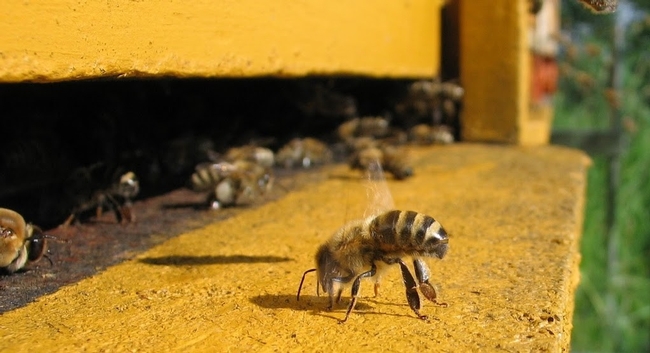By: Carey Gillam, Reuters
Honey bees, critical agents in the pollination of key U.S. crops, disappeared at a staggering rate over the last year, according to a new government report that comes as regulators, environmentalists and agribusinesses try to reverse the losses.
Losses of managed honey bee colonies hit 42.1 percent from April 2014 through April 2015, up from 34.2 percent for 2013-2014, and the second-highest annual loss seen, the U.S. Department of Agriculture said in a report issued on Wednesday.
"Such high colony losses in the summer and year-round remain very troubling," Jeff Pettis, a USDA senior entomologist, said in a statement.
The 2014-15 yearly loss was down slightly from the 45 percent annual loss for 2012-2013 but well above the prior two years of annual measurements and above the benchmark of 18.7 percent that is considered economically unsustainable, USDA said.
Millions of honey bees are relied on to pollinate plants that produce a quarter of the food consumed by Americans. Beekeepers travel the country with managed hives to help the process.
But over the past few years, bee populations have been dying at a rate the U.S. government says must be addressed, and finding an answer has become a politically charged debate.
Beekeepers, environmental groups and some scientists blame a class of insecticide known as neonicotinoids, or neonics, used on crops such as corn as well as on plants used in lawns and gardens.
But Bayer, Syngenta and other agrichemical companies that sell neonic products say many factors such as mite infestations are harming the bees.
The White House has formed a task force to study the issue, and some lawn and garden retailers have been cutting use of neonics.
The Environmental Protection Agency is requiring a series of studies on neonic effects on bees and plans to issue the first of a series of assessments later this year.
The USDA report issued on Wednesday said colony losses were 23.1 percent for the 2014-15 winter months, typically the higher loss period. The 2014 summer loss of 27.4 percent marked the first time summer losses exceeded winter, and marked a surge from the 2013 summer loss of 19.8 percent, USDA said.
The results are considered preliminary and are based on survey responses from about 6,100 beekeepers managing 400,000 colonies, USDA said. Those beekeepers represent nearly 15.5 percent of 2.74 million U.S. bee colonies. A more detailed report is to be published later this year, USDA said.
Attached Images:
